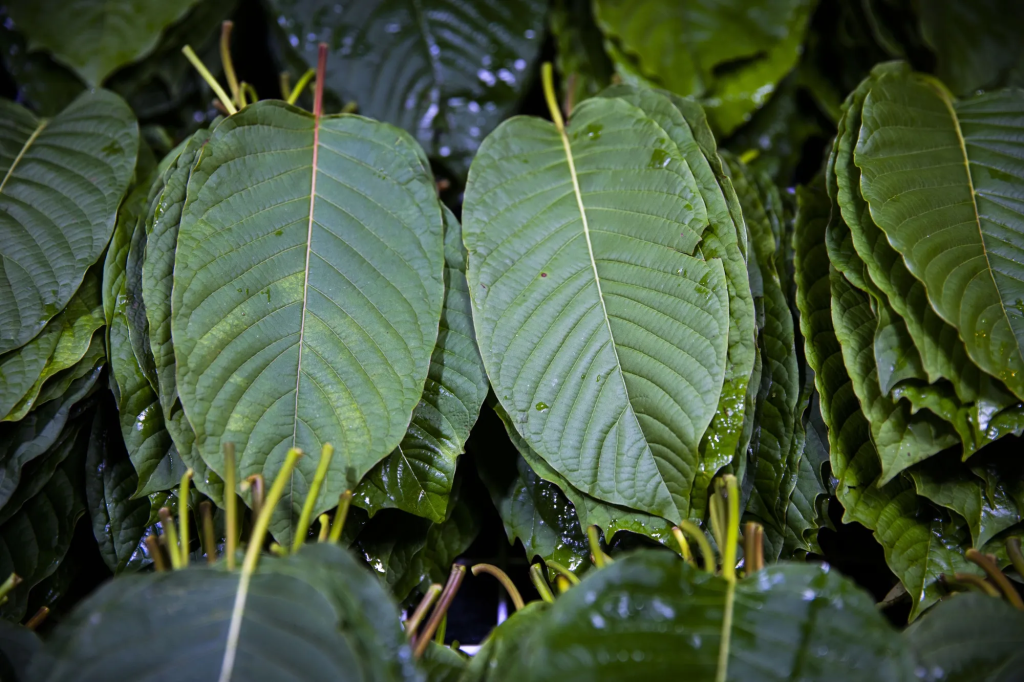Between September 2023 and September 2024, the CDC reported a staggering 24% decrease in opioid overdose deaths—the largest drop in over a decade. This historic shift barely registered in major media outlets, but it may signal one of the most significant public health trends in recent memory.
So what changed?
No blockbuster pharmaceutical innovation. No sweeping policy reform. No public health revolution.
But something did change—beneath the radar.
Thousands of individuals turned to an unregulated natural compound known as 7-hydroxymitragynine (7OH). It’s a metabolite of the kratom plant, long used in Southeast Asia and increasingly favored by chronic pain sufferers, veterans, and people with PTSD in the United States.
This article investigates whether 7OH may be playing a role in this historic shift—and why efforts to criminalize it could jeopardize progress.
What Is 7OH and Why Is It Different?

7OH is not an opioid in the traditional sense. It’s a naturally occurring alkaloid formed in the liver when the body processes mitragynine, the dominant compound found in kratom.
What makes 7OH unique is how it works in the body. It binds to mu-opioid receptors like morphine does, but unlike morphine, it’s a partial agonist with G-protein biased signaling. This means it activates pain relief without fully triggering the beta-arrestin pathway—a signaling route associated with respiratory depression, the number one cause of fatal opioid overdoses.
Research from Kruegel et al. (PMC6598155) identifies this mechanism as crucial in differentiating 7OH from traditional opioids.
Comparing 7OH to Morphine and Other Painkillers
|
Property |
Morphine |
7OH |
|---|---|---|
|
Source |
Synthetic |
Natural metabolite |
|
Mu-Opioid Receptor |
Full agonist |
Partial agonist |
|
Beta-Arrestin Pathway |
Strongly activated |
Weakly activated |
|
Overdose Risk |
High |
Low |
|
Cognitive Function |
Impaired |
Often Improved |
|
Euphoria |
High |
Mild to Moderate |
|
Dependence Potential |
High |
Low to Moderate |
More on mu-opioid receptor pharmacology
7OH’s more balanced profile—pain relief without sedation or respiratory suppression—is gaining attention from those failed by conventional options.
What the Data Says: A Pattern Too Big to Ignore
In 2025, a survey of 122 users revealed compelling trends:
- 84% reduced or quit opioids or antidepressants within 30 days of starting 7OH
- 71% reported improved daily functioning and fewer cravings
- 63% found 7OH more tolerable than traditional medications
CDC-linked survey data indicates this isn’t a fringe movement—it’s a shift.
Legal Grey Zone: What Happens Next?

7OH isn’t federally scheduled—but it might be soon. The DEA is considering a ban based on its classification as a kratom metabolite with opioid-like activity. But such a move could:
- Shut down critical scientific research
- Criminalize veterans and chronic pain sufferers
- Drive people back to lethal alternatives
Read more on DEA policy debates
We’ve seen this story before. In 2016, the DEA’s attempt to ban kratom was met with massive public backlash—eventually leading them to withdraw the decision.
Real Voices: What People Say About 7OH
On Reddit’s r/7_hydroxymitragynine, thousands of users have shared unfiltered testimonies. These aren’t thrill-seekers. They’re trauma survivors, people living with fibromyalgia, and ex-opioid patients who say 7OH gave them their lives back.
“I used to take 100mg of morphine a day. Now I take 10mg of 7OH and I’m more functional, without any side effects.”
“After years of living with PTSD, 7OH is the first thing that helped. I sleep. I work. I can finally be present.”
“This isn’t about getting high. It’s about not being in hell.”
These stories reflect the painkiller’s potential—and its danger if misunderstood or prematurely banned.
PTSD, Pain, and the Middle Path
For patients dealing with chronic pain, PTSD, and anxiety, traditional prescriptions often fall into two categories: heavy sedatives or addictive opioids. 7OH offers something in between.
Reported benefits include:
- Relief without intoxication
- Energy without anxiety
- Emotional regulation without numbness
- Clarity without cognitive fog
Such a profile is exceptionally rare in both plant-based and pharmaceutical tools.
Why Hasn’t 7OH Gone Mainstream?
Simple: It can’t be patented. That makes it unattractive to pharmaceutical companies.
Instead of investing in public research, the government seems more focused on prohibition—risking not just personal freedom, but the ability to study one of the most pharmacologically unique alkaloids available.
We may be criminalizing something that holds the key to safer pain management.
Conclusion: What Are We Really Afraid Of?
The science says 7OH doesn’t behave like traditional opioids. The data suggests it’s helping people taper off harmful prescriptions. The public health numbers show a massive drop in overdose deaths—and still, we’re rushing to outlaw it.
We need more science, not more bans.
If 7OH holds even a fraction of the therapeutic promise its users claim, the responsible path forward is not criminalization—it’s careful regulation, education, and study.
Let’s not make the same mistake twice.
Top 10 FAQs About 7OH
1. What is 7OH?
A metabolite formed when the body processes mitragynine from kratom. It binds to opioid receptors but in a safer, more balanced way.
2. Is it legal?
Yes, federally. However, it exists in a legal grey area, and some states may restrict access.
3. Can it cause overdose?
Not in the same way as opioids. It doesn’t strongly activate the respiratory suppression pathway.
4. Does it get you high?
Mildly, if at all. Most users describe clarity, calm, or mild elevation—not euphoria.
5. Is it addictive?
Potentially, especially with high or daily use. But risk is lower than with morphine or oxycodone.
6. Can it replace opioids?
Some users report switching off opioids completely. It may support tapering or act as a less harmful alternative.
7. How fast does it work?
Effects can be felt within 15–30 minutes, depending on the dose and product.
8. Does it help with trauma or PTSD?
Yes. Many users cite fewer intrusive thoughts and better emotional regulation.
9. Is it better than kratom?
It’s more precise. 7OH isolates the primary alkaloid responsible for kratom’s effects.
10. Will the DEA ban it?
It’s under review. If classified, access could become illegal—despite the lack of overdose evidence.





















